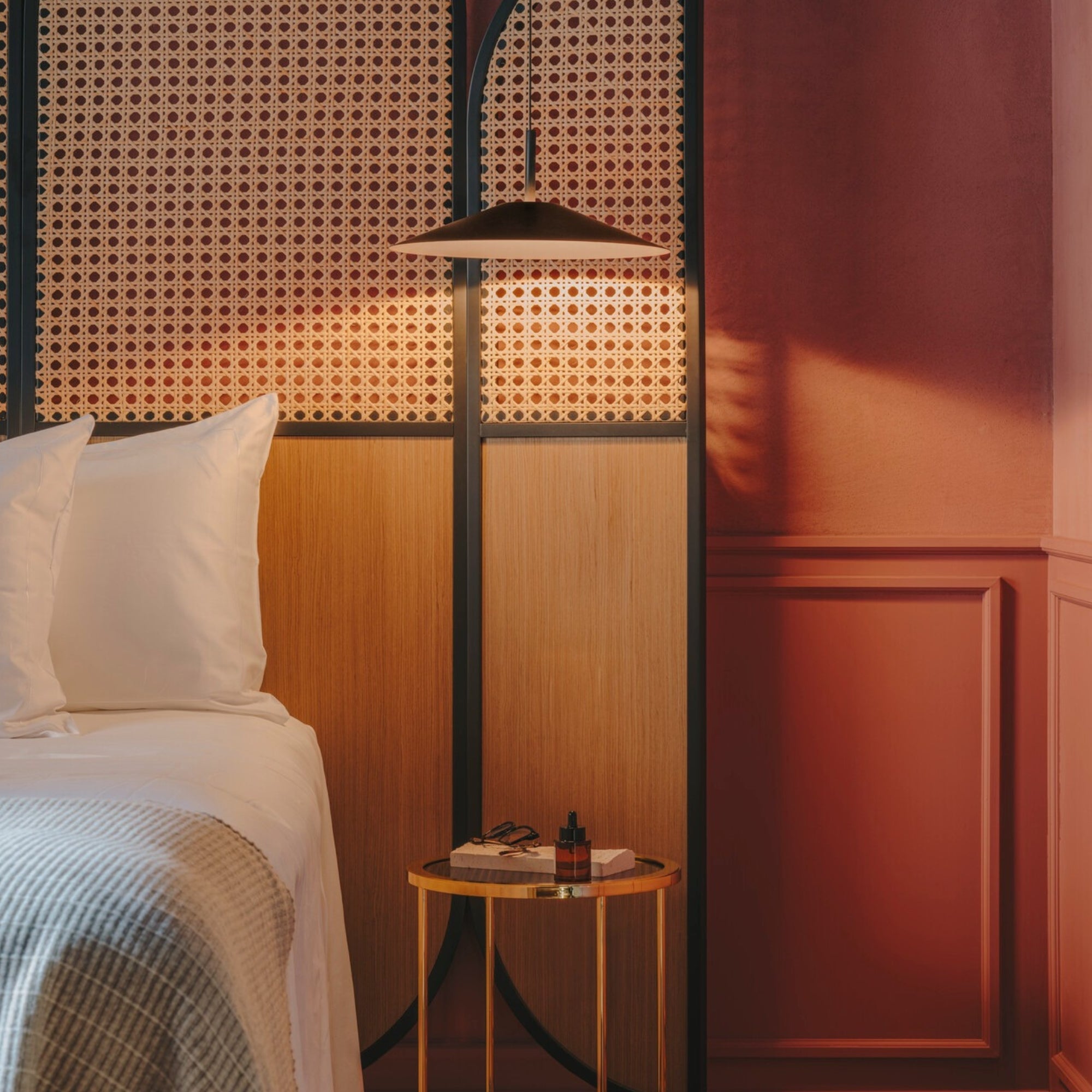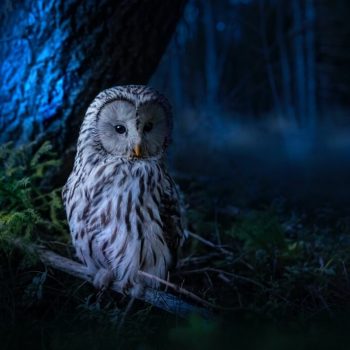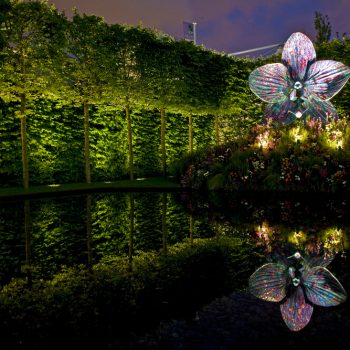Outdoor lighting can create a pleasant and welcoming place to spend time with family and friends, and you can enhance your garden features using landscape lighting. Adding lighting to your outdoor space can also improve the safety and security around your property. Deter intruders and make your garden a safe place to navigate at night with strategically placed outdoor light fittings.
However, excessive lighting harms local nocturnal wildlife. Artificial light at night (or ALAN) can affect breeding, eating, roosting, migrating and mating habits, causing disorientation, dangerous productivity levels and vulnerability to predators. As lighting scheme designers, we always aim to balance function, style and environmental impact. We always account for local wildlife and design your lighting schemes to create the least amount of impact possible while also keeping your lighting functional and attractive.
The key is balance. When deciding on garden lighting, only illuminate the essential areas and strike a balance between safety in your garden and not disturbing the wildlife. Discover how artificial lighting affects your garden wildlife and learn how to reduce your impact on their ecosystem with our handy top tips.
Table of contents
- How does artificial lighting affect wildlife?
- Does artificial lighting affect plant life?
- What can I do to reduce the impact of outdoor lighting on local wildlife?
How does artificial lighting affect wildlife?
Artificial light affects wildlife in different ways. Some are unnaturally attracted to the light, disorientating them during navigation and putting them in harm’s way. While others are deterred from the light, reducing their hunting time and boundaries.
Being mindful of how artificial light affects nature can help reduce your impact on their ecosystem. Here are some ways artificial lighting affects the wildlife in your garden and surrounding areas.
Insects
Nocturnal insects like moths use the moon to navigate. But when faced with a bright artificial light, they are drawn to it. As a result, they become disorientated, waste energy and increase their risk of being eaten.
Furthermore, increased light pollution in cities has impacted the reproduction of glow worms. Female glow worms use a green glow to attract a mate, and with additional lights in people’s gardens, their breeding frequency has declined.
Bats
Although bats might take advantage of a cloud of moths swarming around a garden light by hunting in light beams, they could also leave themselves vulnerable to predators.
Birds
Artificial light also affects the circadian rhythm of garden birds. Robins are especially susceptible to excessive light, extending their feeding periods and singing before dawn. Also, owls may find it more challenging to hunt as their prey are more inclined to hide from the light. And migratory birds become disorientated with excessive light. Excessive light may encourage them to fly lower and hit buildings.
Fish
Keeping your pond lights on all night can negatively impact your aquatic life. It can disrupt their natural 24-hour circadian cycle, and you’ll find they have a general decline in overall health.
Does artificial lighting affect plant life?
Plant life is also affected by artificial light at night. Too much extra light near trees will have a disruptive effect on their natural growth and rest cycle. For example, some trees near lampposts retain their leaves longer.
Artificial light also affects night pollinators. For example, moths, insects and bats get distracted by artificial light, and plants and trees miss out on their nighttime pollination and don’t produce as many seeds, impacting the ecosystem.
What can I do to reduce the impact of outdoor lighting on local wildlife?
Of course, you can’t have zero impact on the environment unless you get rid of your garden lights completely, but this would be to the detriment of safety and security in your garden. We don’t recommend getting rid of garden lighting altogether. Instead, only install the lights you need to keep your garden hazard-free. You can also place lights in strategic ways and use particular light bulbs to reduce your impact on wildlife.
Here are eight top tips for creating a more environmentally friendly garden lighting scheme.
h3 class="wp-block-heading">1. Alter the positionPosition your lights downward to highlight any steps, boundaries and features you want to illuminate. Downward-facing lighting reduces upward glare, which confuses migrators and nighttime pollinators.
2. Be mindful when choosing light fittings.
Spotlights and uplighters cause the most disruption to wildlife. They have a high glare and intensity and cast a broad upward light beam. Downlights help reduce light pollution and focus the illumination where you need it.
3. Shields and hoods
Choose lighting with shields or hoods to reduce upward sky glare and help direct light onto the surface you want to illuminate.
4. Turn your lights off
Extinguish your garden lights when you’re not using them. Reducing the time the lights are on can help the wildlife resume their natural cycles.
5. PIR, timers and dusk-to-dawn lights
PIR lights only come on when they sense motion, meaning you get the light you need when approaching your house and the necessary security to deter intruders. However, the light is only on for a short period, reducing the amount of disruption to wildlife.
Equally, you can incorporate timers controlled by an app into your garden lighting scheme, which means you can control when they turn on and off, allowing you to have them on when you need them most.
Alternatively, dusk-to-dawn lights sense the light change when the sun sets and rises and turn on when you need the light most to allow dusk and dawn foragers time to hunt.
6. Low-intensity light and solar lights
Opt for low-lumen and solar lights, which won’t create as much bright light that disturbs and disorientates animals and insects.
7. Warmer light temperatures
Studies have shown moths and other insects congregate towards bluer light hues more than yellow and red ones. Choose lights with a 2700k colour temperature or lower for less disruptive, warmer white lights.
8. Avoid unnecessary lighting
Avoid unnecessary garden lighting and only illuminate the essentials, like doors, walkways and steps.
Reduce your impact on your garden wildlife with Moonlight Design.
If this seems too overwhelming, you’re not alone. There are so many factors to consider when choosing garden lighting. That’s why we can help select a mindful and informed lighting scheme that doesn’t interfere with the local wildlife.
As lighting design experts, we always consider the local wildlife when planning your lighting scheme. We aim to strike a balance between essential safety and security lighting, beautiful lighting design, and not disturbing the wildlife in your garden. We also always check for endangered or protected species or designated dark zones in your area and design your lighting scheme accordingly. Why not read more about our lighting design service and discover how we can help you find the perfect lighting scheme for your garden?
Related blogs




Leave a comment
This site is protected by hCaptcha and the hCaptcha Privacy Policy and Terms of Service apply.